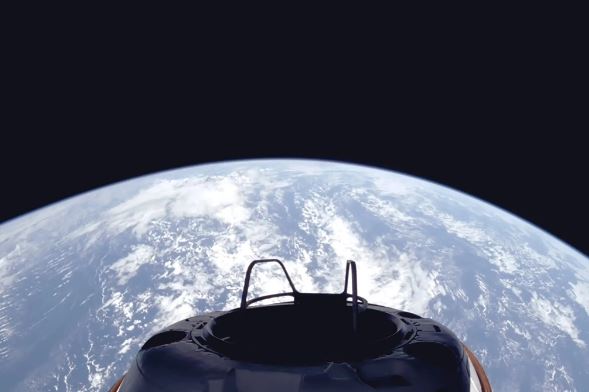Four private astronauts embarked on an ambitious space mission, venturing farther from Earth than any human has in over 50 years. Two of the astronauts, Sarah Gillis and Anna Menon, have now traveled farther from the planet than any other women in history. This groundbreaking mission, named Polaris Dawn, launched at dawn on Tuesday after being delayed for nearly two weeks due to adverse weather conditions around Florida.
The astronauts are flying aboard a SpaceX Crew Dragon capsule, traveling along an elliptical path that reached as far as 755 miles above Earth’s surface. This marked a significant departure from typical space missions in recent decades, which usually remained within a few hundred miles of Earth. Their journey, though only a small fraction of the 240,000-mile distance traveled by NASA’s Apollo astronauts to the moon, represents humanity’s farthest venture into space since the last moon mission in 1972.
The mission, led by Jared Isaacman, the billionaire founder of payment services company Shift4, is part of a collaboration with SpaceX. Isaacman’s Polaris Dawn is the first in a series of three missions designed to push the boundaries of space technology, with the long-term goal of aiding SpaceX’s efforts to send people to Mars. One of the mission’s most daring objectives, a spacewalk, is scheduled for Thursday and will test new spacesuits developed by SpaceX.
The Crew Dragon spacecraft performed a maneuver on Tuesday evening to further extend its distance from Earth. The spacecraft’s thrusters fired for eight minutes, pushing its farthest point in orbit outward by another 125 miles. This placed Polaris Dawn at a record-breaking altitude of over 853 miles, surpassing the 1966 Gemini XI mission, which held the previous record for the farthest distance from Earth not aimed at the moon.
In addition to Isaacman, the Polaris Dawn crew includes Scott Poteet, a retired U.S. Air Force lieutenant colonel and pilot, who is a longtime friend of Isaacman’s, and two SpaceX employees: Anna Menon, a lead space operations engineer, and Sarah Gillis, an astronaut training engineer. These individuals represent a blend of entrepreneurial spirit, military expertise, and cutting-edge space technology.
The mission’s high orbit is not just about breaking records. It is part of a strategic plan to minimize the crew’s exposure to cosmic radiation and the risk of collisions with tiny pieces of space debris. Once the crew reaches their highest point, another thruster firing will drop them to a lower orbit to prepare for the scheduled spacewalk.
In preparation for the spacewalk, the Crew Dragon capsule’s atmospheric pressure is gradually being lowered from the standard 14.5 pounds per square inch (p.s.i.), equivalent to Earth’s surface, to 8.65 p.s.i. This process helps prevent decompression sickness, or “the bends,” a risk faced by divers and astronauts alike. Decompression sickness occurs when nitrogen gas in the bloodstream expands too quickly, causing dangerous bubbles.
On Thursday, two of the four astronauts — Jared Isaacman and Sarah Gillis — will leave the capsule to conduct the spacewalk. Menon and Poteet will remain inside, managing the astronauts’ life-support systems, which are connected by umbilical cords providing oxygen, power, and other essential functions. The main goal of the spacewalk is to test SpaceX’s new spacesuits, which have been upgraded from earlier versions to provide better protection against micrometeoroids and to regulate temperatures.
After the spacewalk, which is expected to last about two hours, Isaacman and Gillis will return to the capsule, and the crew will repressurize the interior. The entire operation will be a key test for future space missions, particularly those aimed at deep space exploration.
While the spacewalk is a highlight, the crew is also conducting a series of scientific experiments throughout the mission. These include brain MRIs and attempts to capture X-ray-like images using cosmic radiation, without the need for an X-ray machine. The crew reportedly spent about three and a half hours on research activities on Tuesday, including testing communication systems with SpaceX’s Starlink satellites.
In addition to advancing space technology, Polaris Dawn is raising money for St. Jude Children’s Research Hospital in Memphis, combining space exploration with charitable efforts.
With Polaris Dawn, Isaacman and his team are pushing the boundaries of what is possible in private space exploration, inching closer to the dream of sending humans to Mars. The mission’s record-breaking achievements and technological advancements make it a milestone in the ongoing pursuit of space innovation.

